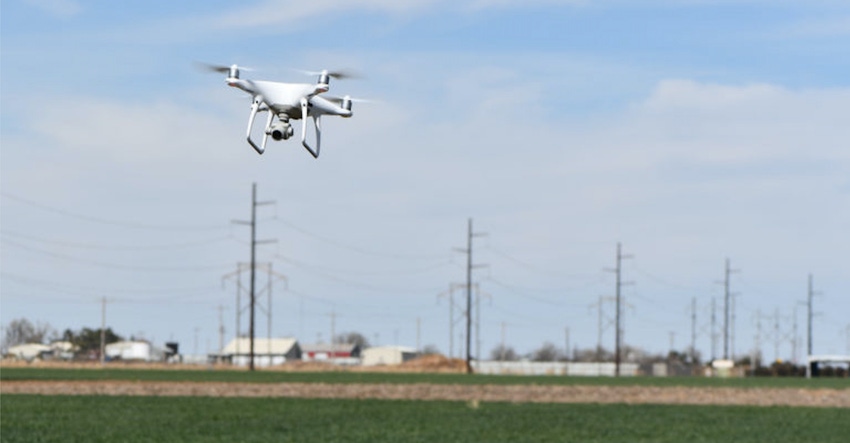
Researchers at the USDA-ARS Cotton Ginning Research Unit in Stoneville, Miss. are developing technologies to detect plastic contaminants in cotton fields.
Using cameras mounted to UAV’s, these scientists are creating an image database of litter commonly blown into cotton fields — mainly plastic bags, but also cans, bottles and other trash. The image database will be a learning tool with which researchers will then train an AI software model to detect multiple types of contaminants.
The ultimate goal is to develop tools that will allow producers to map plastic contamination in a cotton field and remove it prior to harvest.
“At this point in our research, we’re focusing on detection,” said Joe Thomas, research leader at the Stoneville facility. “We have collected thousands and thousands of images, but we still need to collect more. As we continue to add to our database, the accuracy has continued to improve. What we have now is so much better than what we started with.”
Research approach
Shortly before harvest, researchers place plastic bags at multiple locations throughout cotton fields. A UAV fitted with a camera is flown across the field taking images of the trash.
GPS locations with the current setup are based on the location of the UAV at the time of image capture, not the contaminate location within the image. While the research project is still in the detection phase, tagging the precise location of the plastic contaminants will be essential for eventual removal.
“The drone and camera are simply capturing an image,” Thomas said. “We are then training computer software to automatically recognize those images. The real work is being done behind the scenes with the software.”
Plastic problems
Plastic contamination in U.S. cotton is a significant issue that affects all parties along the distribution line. U.S. cotton is considered to have some of the lowest levels of contamination in the world. However, that reputation is in jeopardy as complaints from foreign and domestic mills are on the rise.
While the vast majority of plastic contamination stems from module wrap, growers who farm along a busy highway will be quick to tell you that plastic contamination from roadside litter can be a major problem and removal is not easy. The last thing the industry needs are flimsy grocery sacks adding to their plastic woes.
What does future hold?
As researchers at Stoneville continue fine tuning their image database, their next phase will evaluate removal options. Unfortunately, according to Thomas, it’s not as simple as attaching a grapple to the UAV and picking up the plastic as it is detected.
“One of the biggest limiting factors for a UAV is power, or battery life, so picking up trash with a UAV is not practical,” he said. “Our focus has been finding images over a large area quickly and utilizing GPS location of these images. In the future, perhaps we could send these GPS coordinates to a unit parked on the side of the field, and this unit could go out by itself and pick up the litter. Or maybe we put the removal tools on the harvester itself.”
“There are a lot of possibilities, but we have to be able to identify and locate the plastic first,” he continued. “You can’t remove it if you don’t know it’s there. So, for now our primary objective is to refine our database until it is commercially viable. That’s what we’re here for — to create technology and transfer that technology to commerce and to our stakeholders.”
About the Author(s)
You May Also Like






